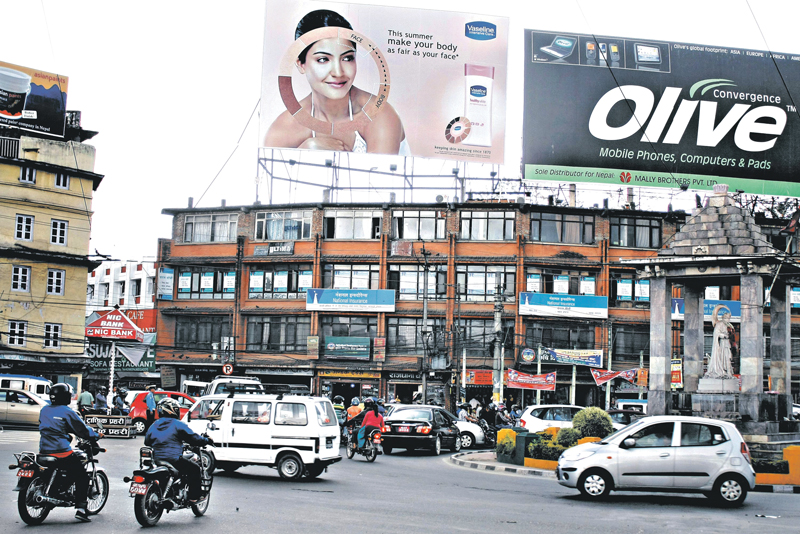KMC to remove hoarding boards, posters
Kathmandu, December 26
A meeting of stakeholder agencies headed by Minister of Home Affairs Ram Bahadur Thapa convened in Singha Durbar today decided to remove hoarding boards, posters and messy wires dangling overhead in the capital city.
Kathmandu Metropolitan City will form four task force and start removing the visual pollutants with effect from tomorrow, read press release issued by the MoHA. The meeting has decided to give ultimatum to telephone, cable and internet service providers to remove the wires strung on utility poles.
“If they failed to remove the wires within the stipulated time, the Kathmandu Metropolitan City will remove them,” the release read.
Minister Thapa said the move was in line with the Supreme Court order to remove hoarding boards, advertising posters and pamphlets that have caused visual pollution in the city.
Recently, a contempt of court was filed at the apex court against the government’s failure to abide by the SC order passed on 2 September 2015.
Kathmandu Metropolitan City Mayor Bidhya Sundar Skaya said the metropolis will act on it from tomorrow.
Most of the commercial and public places of Kathmandu are now crowded with hoarding boards.
They can be seen on rooftops, verandas, sides of buildings, utility poles and open grounds. They are apparently popping up using a loophole in the law, deteriorating the landscape of the city and jeopardising safety of pedestrians and road users.
Hoarding boards can also be seen on walls along the roads, which can collapse due to the weight of heavy advertisement materials during disasters like earthquakes, causing injuries and fatalities.
But the authority concerned is doing precious little. Most of the hoarding boards have been placed without conducting safety audit. Advertisement (Regulation) Act, prohibits the display of hoarding boards on electricity and telephone poles.
Dangled web of overhead cables all over the city has added to visual pollution.
The cables hanging low in parts of the city have also put pedestrians and motorists at risk.






